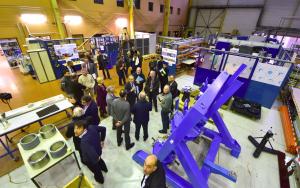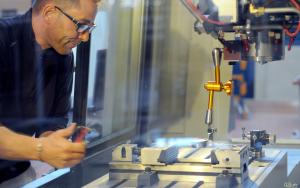Over an area of 700 m², four distinct labs are devoted each to a specific magnet-related issue or activity─a high voltage test lab, a low voltage test lab, a mechanical workshop including a large computer numerical control (CNC) machine, and an insulation/vacuum impregnation lab. Additional space is also made available for larger mockups.
"What we do here is test the elements of the ITER magnetic system component by component," explains Bertrand Peluso, the MIFI technical coordinator on the CEA side. "The lab also enables us to assess in real conditions the technical teams that will be involved in the assembly phase and the procedures that will be implemented."
CEA's experience in large superconducting magnets was acquired in building and operating the Tore Supra (now
WEST) tokamak, whose construction was launched in the early 1980s, and more recently in providing, within the framework of the
Broader Approach Agreement, half of the toroidal magnets to JT-60SA Japanese tokamak project .
For close to a quarter century, the French public institution has also been involved in the R&D activities that led to ITER design and construction. And since the creation of MIFI in 2014, the lab has been the place where CEA experience is shared and where challenges large and small are faced in a collaborative fashion.
"What's important here is proximity and flexibility," says Arnaud Devred, the deputy head of ITER's Magnet Division. "If an issue arises on a component being manufactured somewhere at the other end of the world, we can reproduce the fabrication process here—and sometimes the component itself—to determine where the problem lies. We've had issues pending for years which, thanks to the common work at MIFI, we were able to solve in a few weeks' time."
Sample activities include: practicing the insertion of high-voltage cables for ITER magnet feeders on contorted cable duct mockups; fabricating busbar
joint samples (similar to the ones which will have to be assembled in the tokamak pit) for testing in ITER-relevant conditions at the
SULTAN facility in Switzerland; testing cables, plugs, and sensors under high voltage and cryogenic conditions ... in short, everything pertaining to critical magnet components and auxiliaries.



